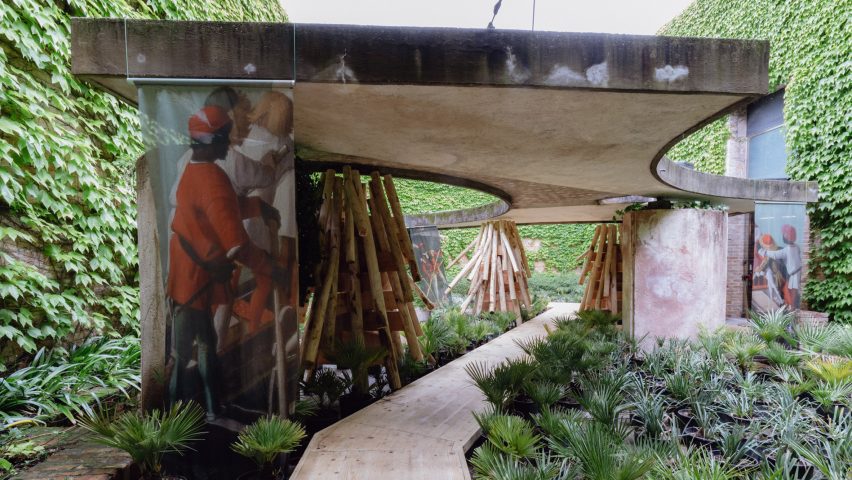
Force Majeure exhibition shines a light on 16 African and diasporic designers
The Central Pavilion at this year's Venice Architecture Biennale brings together 16 architects, including David Adjaye and Diébédo Francis Kéré, who "represent a distilled force majeure of African and diasporic architectural production".
Force Majeure is one of six shows that make up The Laboratory of the Future, the 18th edition of the Venice Architecture Biennale, which is curated by Lesley Lokko.
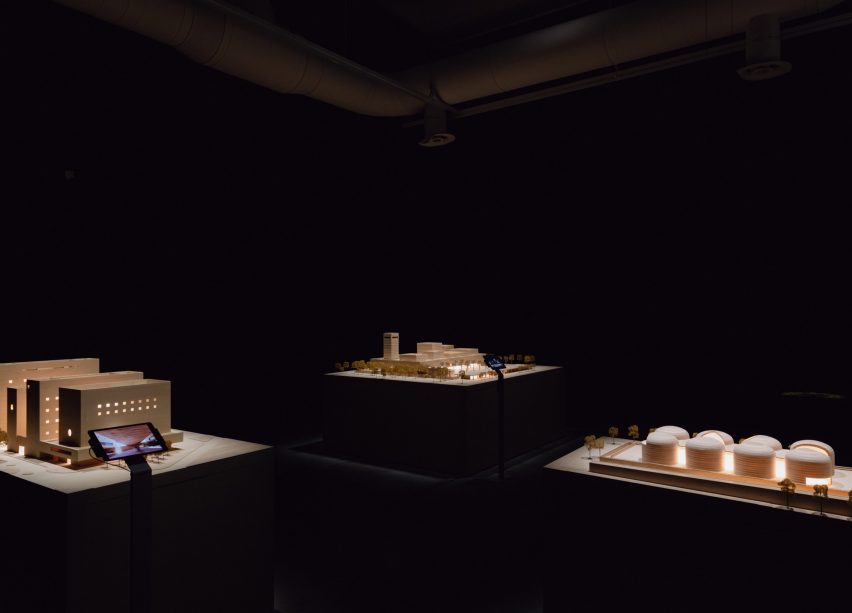
The exhibition highlights African and diasporic artists and architects working today, including well-known figures like Adjaye and Kéré, and emerging talents like Walter Hood and Thandi Loewenson.
Other participants include architect Mariam Issoufou Kamara of Niger-based Atelier Masomi, American artist Theaster Gates and American-Rwandan architect Christian Benimana, of MASS Design Group.
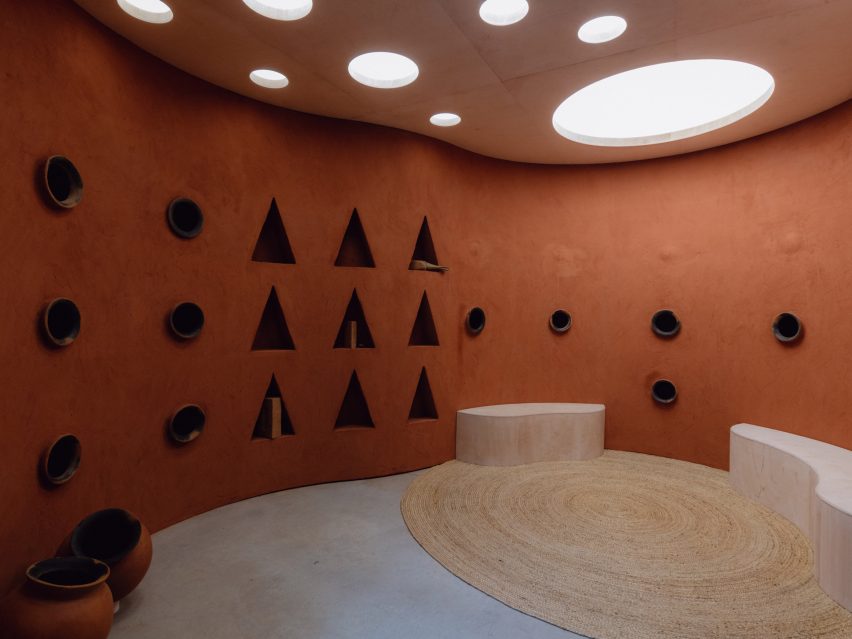
"Those gathered here represent a fraction of the exploding community of African and African diaspora practitioners who are redefining the term 'practice' in ways that could not have been imagined a decade ago," said Lokko.
California-based landscape office Hood Design Studio has created one of the show's most eye-catching installations in the Scarpa Garden, a courtyard on the side of the Central Pavilion.
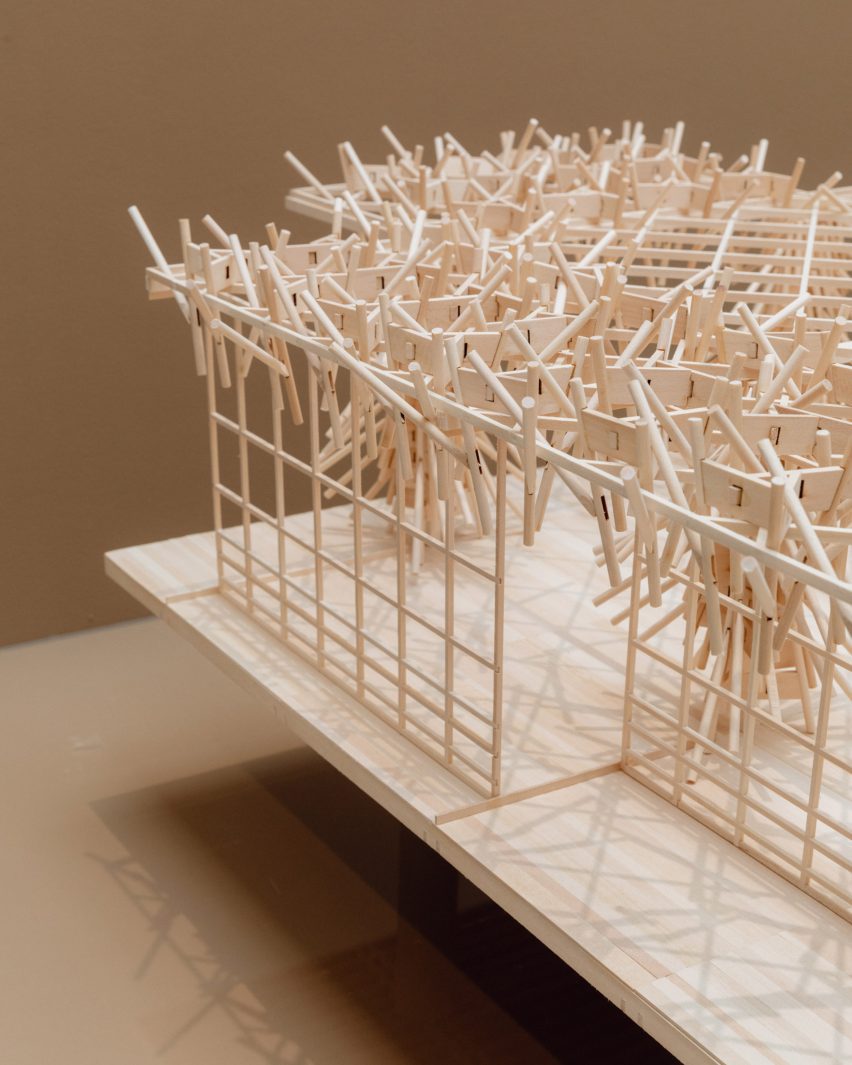
Native(s) Lifeways is a proposal for how a history of basket-making can be translated into architecture, creating an "arts lifeway" in the creek wetland of Phillips, a former plantation in South Carolina, USA.
The full-scale model is accompanied by a series of scale models that show how native pine, oak and palm wood structures can be created within the sweetgrass landscape.
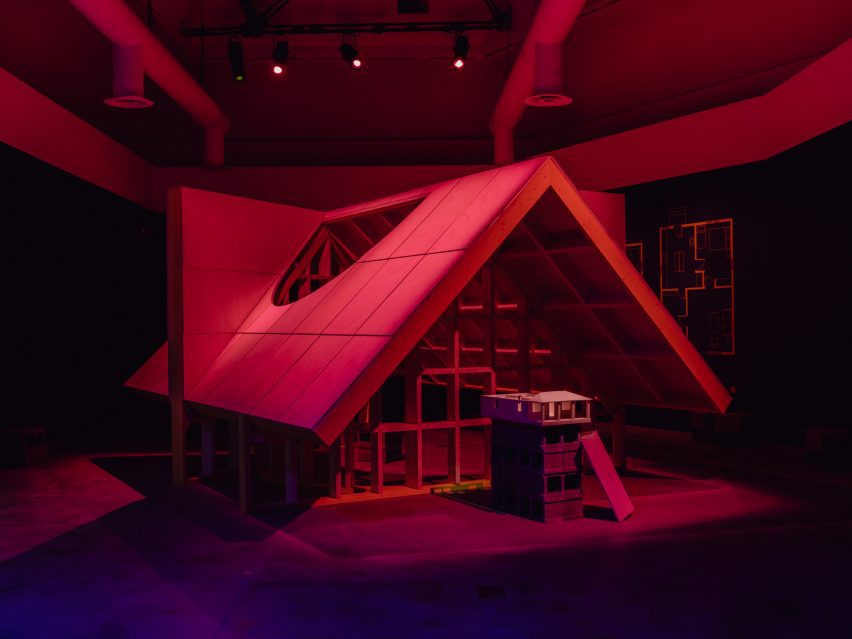
Another large-scale structure comes from American architect Sean Canty, whose Philadelphia-based studio has built a "symbolically over-scaled roof".
Edgar's Sheds draws from two sheds built by Canty's great-grandfather, to explore the values of a Black vernacular.
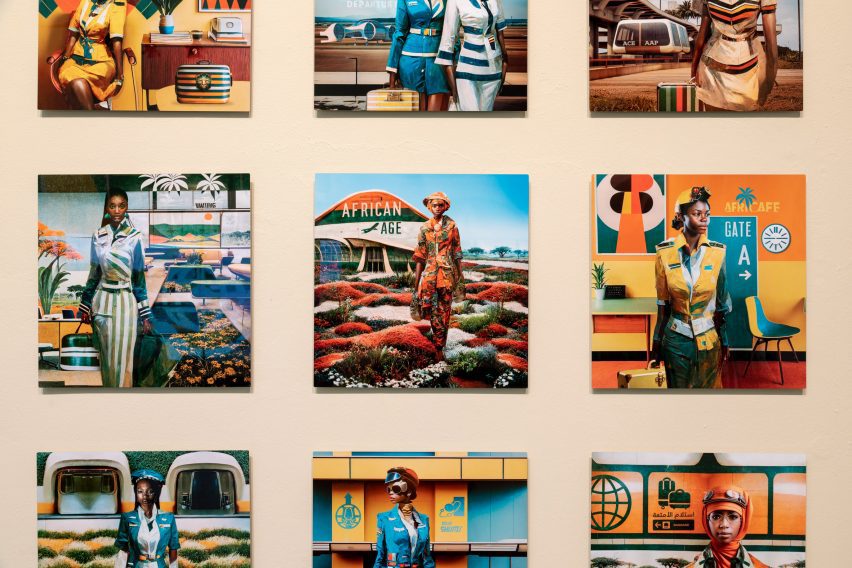
One of the most imaginative projects on show is by Nigerian artist Olalekan Jeyifous, who has visualised a "retrofuturist African eco-fiction" called the All-Africa Protoport.
It imagines Africa using indigenous knowledge to develop an unprecedented system for zero-emissions energy production, which leads to the creation of an Africa-centric international transport network.
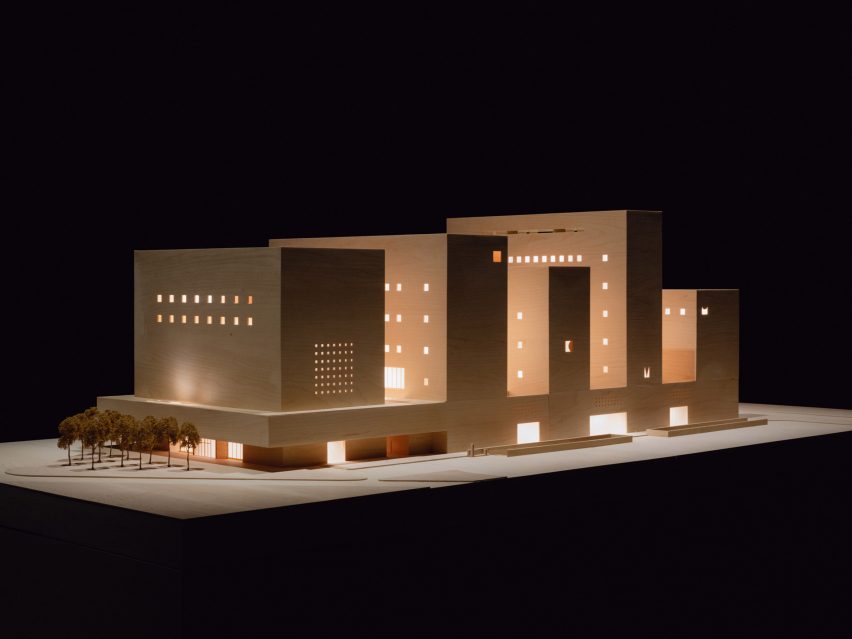
Ghanaian-British architect Adjaye has contributed models and videos of architectural projects including the Edo Museum of West African Art, proposed by Adjaye Associates for Nigeria.
His studio also built the black wood Kwaee pavilion in the biennale's other main venue, the Arsenale.
Burkinabé architect and Pritzker Architecture Prize laureate Kéré has created a mock-up that explores how architecture can passively heat and cool in extreme climates, while Atelier Masomi presents models and hand-drawn plans of projects in its home city of Niamey, Niger.
Meanwhile, architect Sumayya Vally of South Africa-based Counterspace has teamed up with artist Moad Musbahi on an artwork that applies "the logic of minarets and totems" onto Venetian wooden posts.
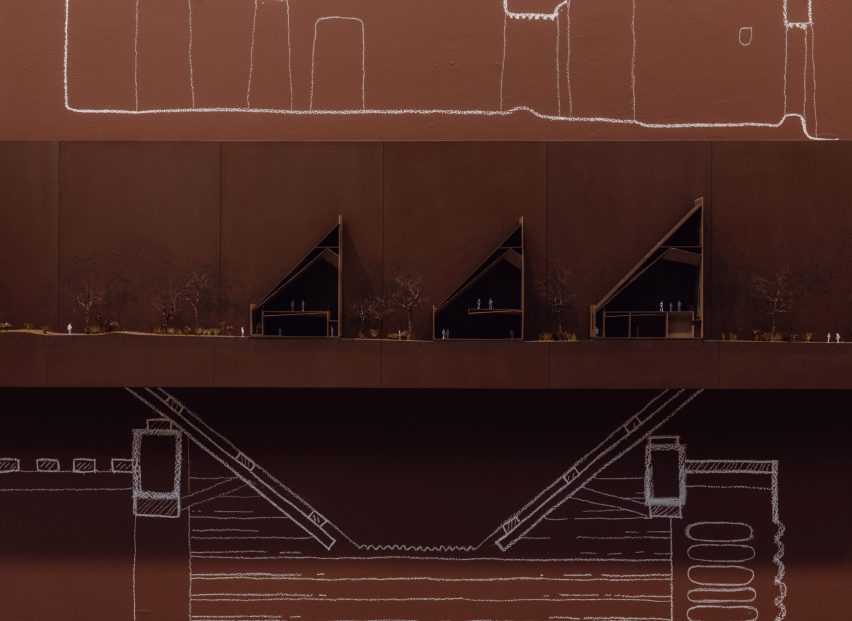
Other standout installations include Parliament of Ghosts, by artist Ibrahim Mahama, which uses abandoned train seats and salvaged school furniture to explore memories of Ghana's shift from British colony to independent nation.
The exhibition is completed by the work of SOFTlab, Koffi & Diabaté Architectes, Cave Bureau, Urban American City, and Basis with GKZ, a team that includes Factory Fifteen founder Kibwe Tavares.
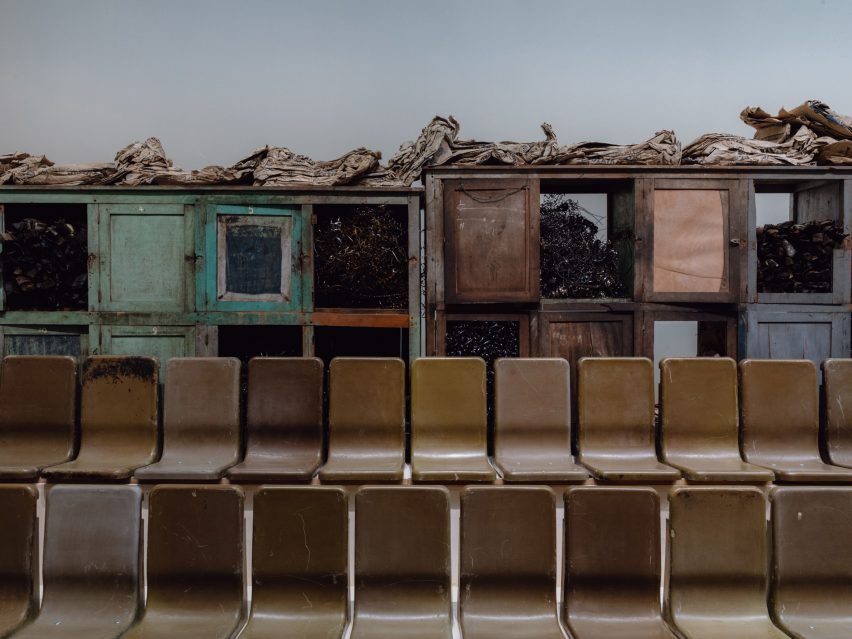
Lokko describes the 16 Force Majeure participants as "some of the most significant African and African diaspora practitioners working today",
"All participants in this Biennale Architettura speak from the richly creative 'both/and' position that is specific to those who occupy more than one identity, speak more than one language, or speak from locations long considered outside the centre," she said.
"We have deliberately chosen to frame participants as practitioners, not architects and/or urbanists, designers, landscape architects, engineers or academics because it is our contention that the rich, complex conditions of both Africa and a rapidly hybridising world call for a different and broader understanding of the term architect."
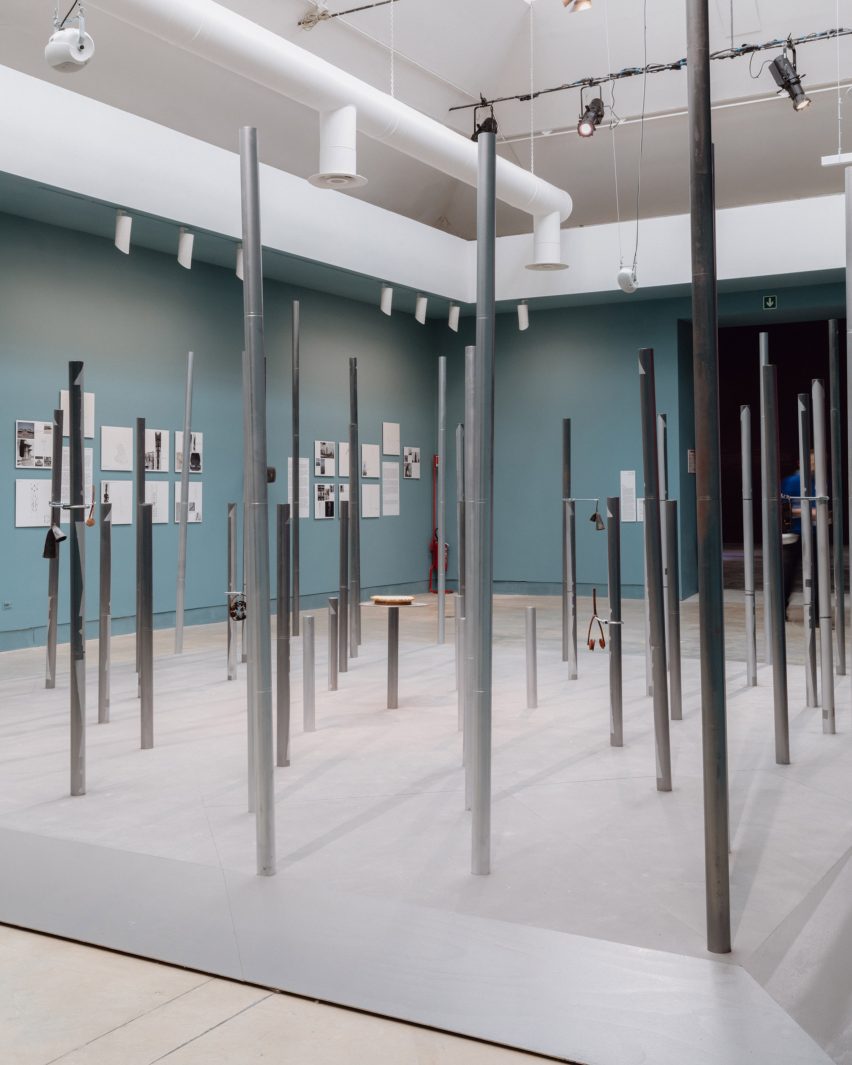
The rest of the Laboratory of the Future exhibition is hosted at the Arsenale.
Dezeen has spotlighted nine exhibits from this venue in a roundup, with examples including an installation made from yellow-plastic gallon containers and a deconstructed building facade.
The Venice Architecture Biennale takes place from 20 May to 26 November 2023. See Dezeen Events Guide for information about the event, plus a list of other architecture and design events taking place around the world.